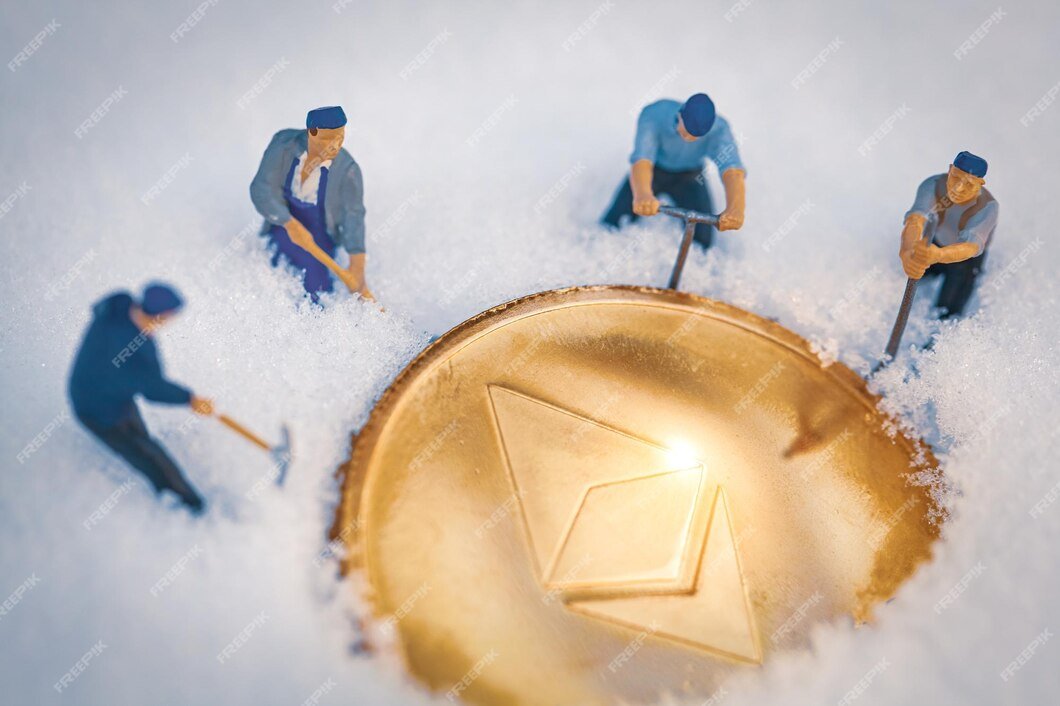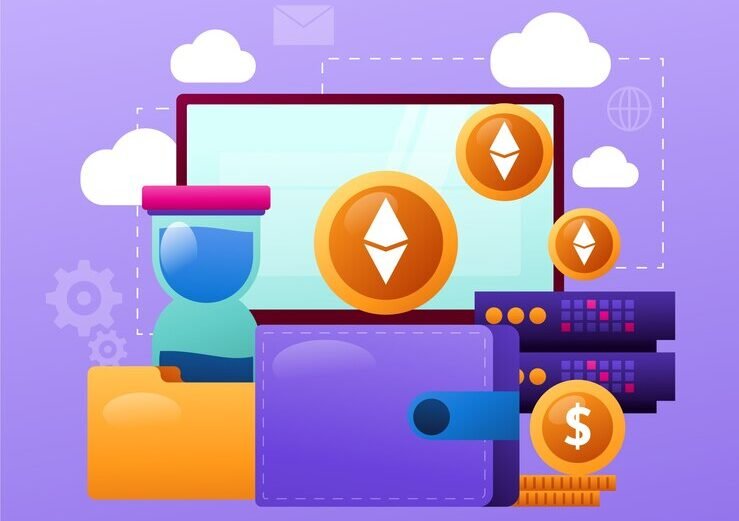How to Mine Ethereum: A Step-by-Step Guide
The world of cryptocurrencies has experienced exponential growth over the past decade, and Ethereum has emerged as one of the leading digital assets. Mining Ethereum, the process of validating transactions and creating new blocks on the blockchain, can be a lucrative venture for those willing to put in the effort. In this guide, we will walk you through the step-by-step process of mining Ethereum and explore the potential opportunities it presents for aspiring miners. Before diving in, it’s essential to mention that traders looking to maximize their crypto profits can explore platforms. Your trading success awaits you on Immediate Matrix.
Understanding Ethereum Mining

Ethereum mining is a critical component of the network, as it helps secure and maintain the blockchain’s integrity. Miners use their computational power to solve complex mathematical puzzles, verifying and grouping transactions into blocks. These blocks are then added to the blockchain, and miners are rewarded with newly minted Ethereum coins for their efforts.
Choosing the Right Mining Hardware
The first step in starting your Ethereum mining journey is selecting the appropriate hardware. High-performance graphic processing units (GPUs) are the most common choice for mining Ethereum. When choosing a GPU, consider factors like hash rate, power consumption, and overall efficiency. It is worth noting that some miners also opt for specialized mining rigs known as Application-Specific Integrated Circuits (ASICs), but these are typically more suitable for mining Bitcoin.
Creating an Ethereum Wallet
Once you have your mining hardware ready, you will need an Ethereum wallet to store the mined coins securely. There are various types of wallets available, including hardware wallets, software wallets, and online wallets. Hardware wallets are considered the most secure as they are not connected to the internet when not in use, reducing the risk of hacks or theft. On the other hand, software and online wallets offer more convenience for regular transactions.
Joining a Mining Pool
Mining Ethereum individually can be challenging, especially for those with limited computational power. Therefore, many miners choose to join mining pools. A mining pool is a group of miners who combine their computing resources to increase the chances of successfully mining a block. Once a block is mined, the rewards are distributed among the participants based on their contributions.
Installing Mining Software
With your mining hardware set up and a wallet in place, the next step is to install mining software. Several mining software options are available, each with its unique features and capabilities. Popular choices include CGMiner, Ethminer, and PhoenixMiner. It is essential to ensure that the software is compatible with your mining hardware and supports the Ethereum network.
Configuring Your Mining Setup
Before you start mining, you’ll need to configure your mining setup. This involves entering relevant details, such as the mining pool’s address, your wallet address, and the mining software’s settings. This step ensures that your mining rewards are sent to your wallet as they are earned.
Monitoring and Optimizing Performance
Once your mining operation is up and running, it’s crucial to monitor its performance regularly. Keep an eye on the hash rate, temperature, and power consumption of your mining hardware. Adjust settings as needed to optimize efficiency and avoid overheating. Efficient mining not only maximizes your earnings but also prolongs the lifespan of your hardware.
Dealing with Challenges and Risks
Ethereum mining can be a rewarding endeavor, but it’s not without its challenges and risks. The mining difficulty of Ethereum adjusts regularly, which means that the computational power required to mine a block may increase over time. Additionally, fluctuations in the price of Ethereum can impact the profitability of mining. It is essential to stay informed about market trends and be prepared to adapt to changing conditions.
Conclusion
Mining Ethereum can be a lucrative venture for those willing to invest time, effort, and resources into the process. By following this step-by-step guide, aspiring miners can set up their mining operations and contribute to the security and decentralization of the Ethereum blockchain. However, it’s essential to keep in mind that mining involves certain risks and uncertainties. For those seeking alternative ways to profit from the cryptocurrency market, platforms offer opportunities for online trading and investment. Ultimately, whether you choose to mine Ethereum or explore other avenues, the world of cryptocurrencies offers a wealth of possibilities for those daring enough to embark on the journey.

















